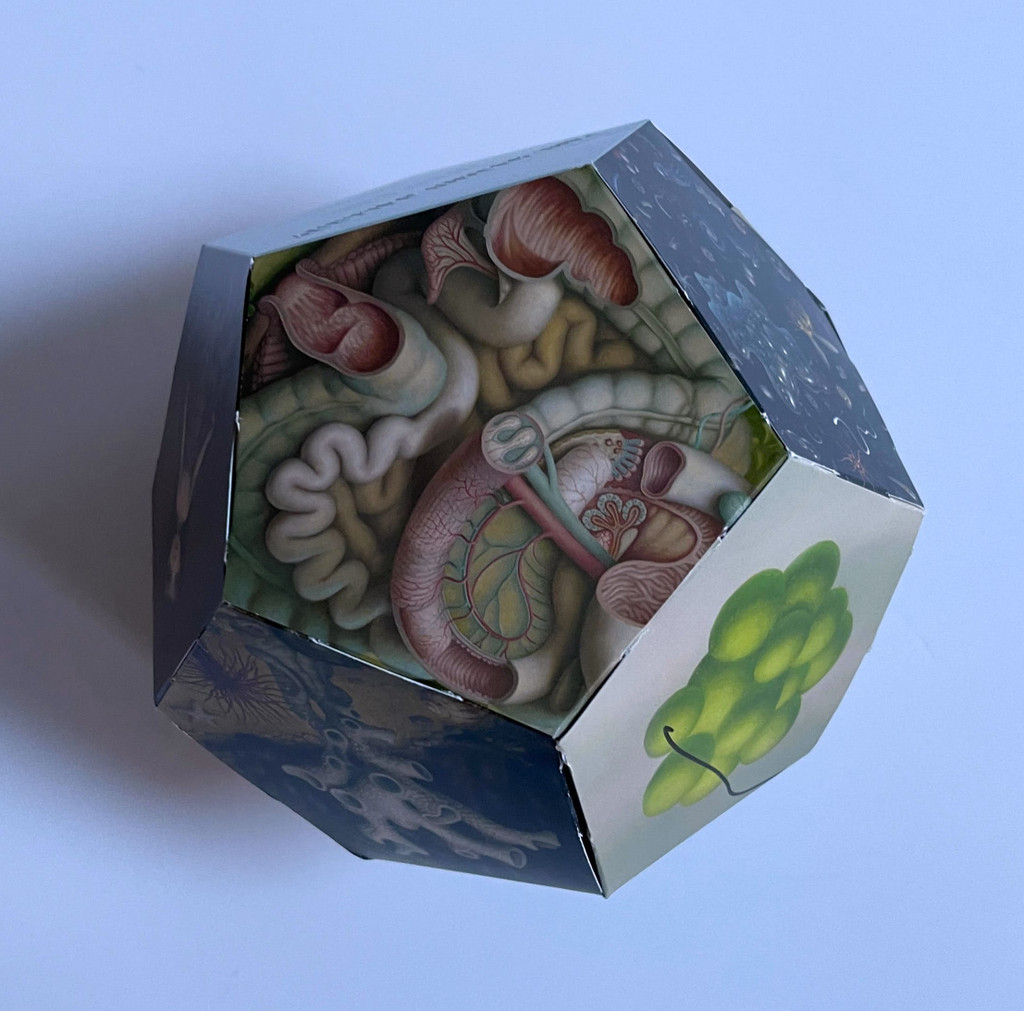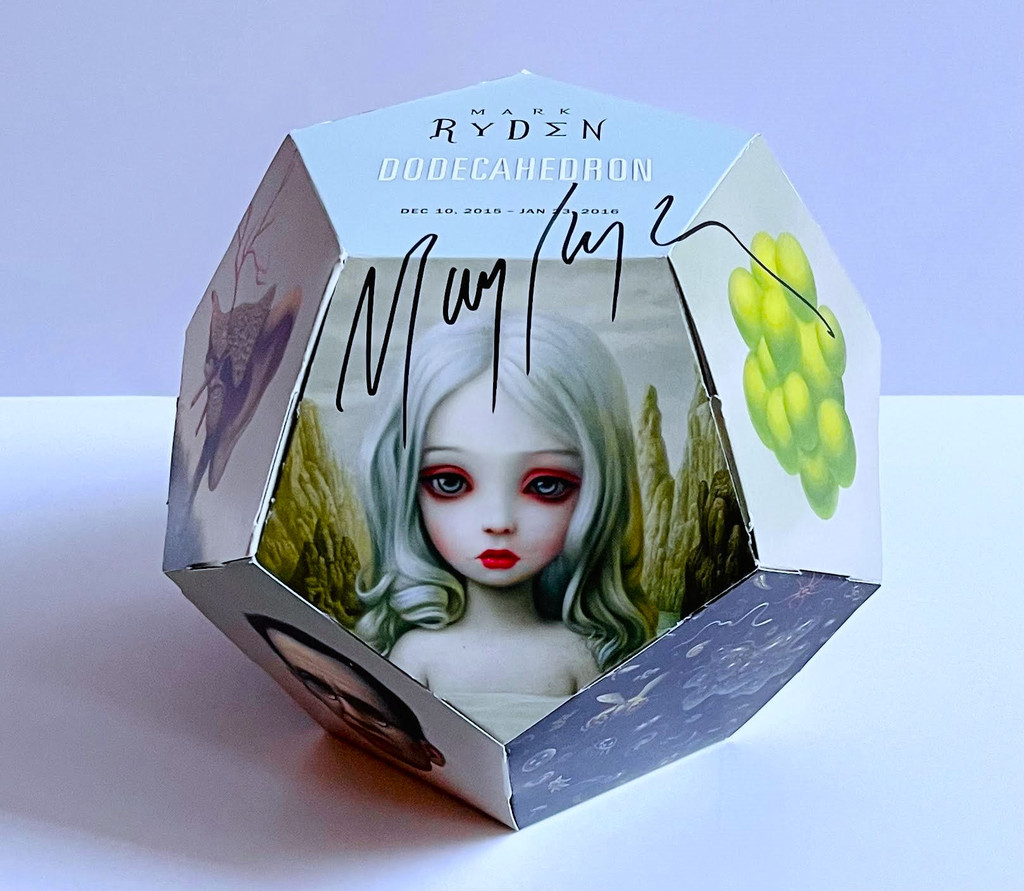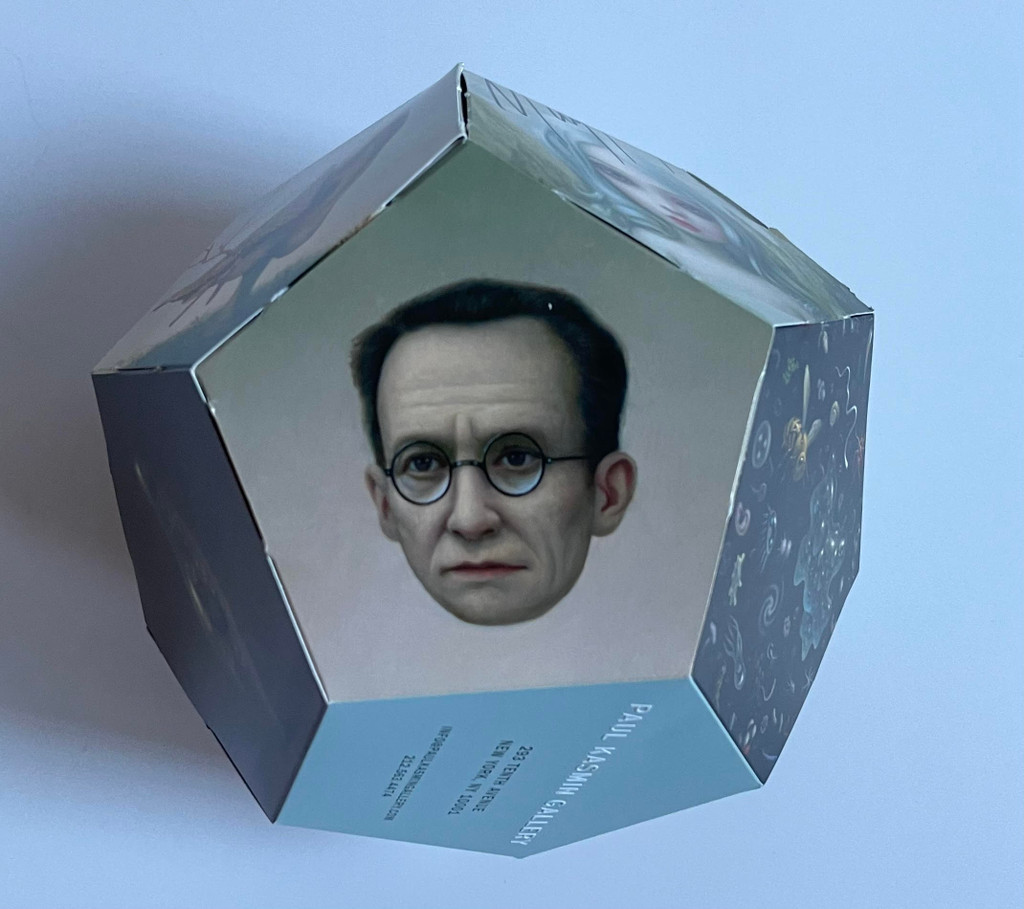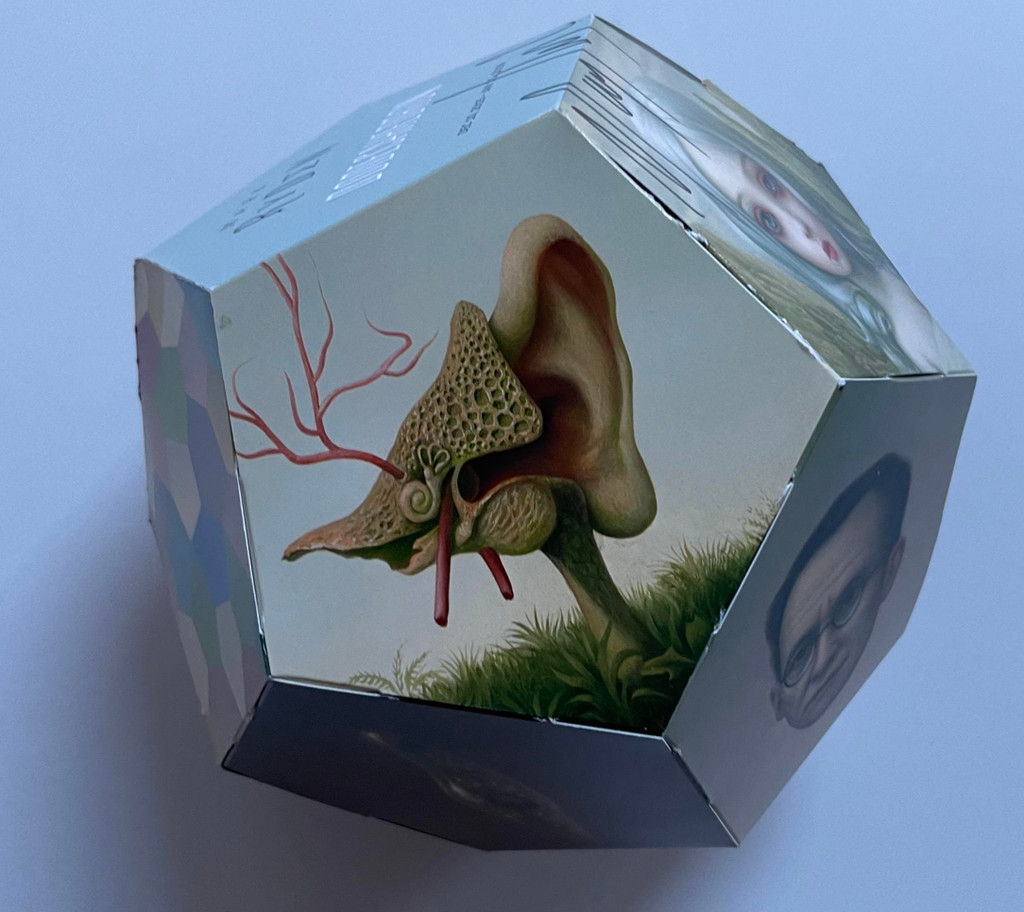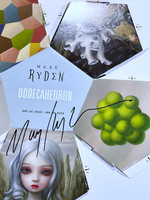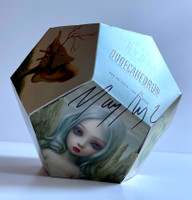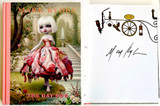
An Educated Collector is Our Best Client
In business for nearly two decades, we are a well established, popular contemporary art boutique specializing in expertly chosen, blue chip prints, multiples, uniques, books, ephemera and merchandise at different price points, with a focus on the secondary market. Please click on the "Contact Us" button at the bottom of this page for questions about any work, pricing and/or to arrange to visit our showroom/gallery - located in between Manhattan's Flatiron and Chelsea Flower Districts.
Mark Ryden, 2 part invitation forming a 3-D Dodecahedron (hand signed by Mark Ryden), 2016
CONTACT GALLERY FOR PRICE
Description
Mark Ryden
2 part invitation forming a 3-D Dodecahedron (hand signed by Mark Ryden), 2016
Offset lithograph invitation
Hand signed by Mark Ryden
6 1/2 in diameter
Ingeniously designed 2-parts which form a 3-D paper sculpture in the shape of a dodecahedron, which the artist, exceptionally, hand signed for the present owner at the Kasmin gallery in Chelsea. (A dodecahedron has twelve sides or flat faces, and thus uses a prefix that comes from the Greek word for 'twelve'.)
Collectors item when hand signed
Ships fully assembled.
Provenance
hand signed for the present owner at the Kasmin gallery in Chelsea
About Mark Ryden:
Blending themes of pop culture with techniques reminiscent of the old masters, Mark Ryden has devised a singular style that blurs traditional boundaries. His work first garnered attention in the 1990s as he ushered in a new genre of painting, “Pop Surrealism,” which developed the scope and spirit of the 20th century surrealism by embellishing its vocabulary with contemporary cultural references.
Ryden’s work exquisitely renders a universe replete with fantastical characters amid enchanted landscapes that embody the artist’s meticulously realized signature blend of archetype, kitsch, and narrative mysticism. Ryden’s modern mythologies inseparably interweave twin senses of comfort and menace. “Most of my work engages with the relationship between the physical world and the spiritual world,” he has said. His are scenes that exist in the ambiguous space between these two realms, in which nostalgia—and by extension memory, even death—are ever-present.
This time-honored, artistic craftsmanship elevates heavily sentimentalized elements of American tradition and antiquity, collected as though for a cabinet of wonders. The labor-intensive canvases deftly rework centuries of art history, combining the grandeur of Spanish and Italian religious painting with the decorative richness of Old Master compositions and the lush textures of French Neoclassicism. His ornately carved frames and meticulously glazed surfaces lend the paintings a baroque exuberance that adds gravity to their enigmatic themes.
Takashi Murakami has said: “Mark Ryden, Yoshitomo Nara, and I, among others, belong to a generation of artists who have been facing in the same general direction. What I mean by the ‘same direction’ is that as children, we were baptized in subculture and that experience remains intensely imprinted on each of our beings. When we subsequently began painting in our adolescent years, we also started to study art history while simultaneously developing our painting technique. Once we had full command of both of these, we succeeded in combining historical painting methods with subculture. That, in a nutshell, is our generation.”
Ryden’s collaboration with the American Ballet Theatre to reimagine Schlagobers, the Richard Strauss libretto and score first performed at the Vienna State Opera in 1924, places Ryden within a rarefied tradition of visual artists in collaboration with dance. With Whipped Cream, Ryden joins an eminent cadre of artists who have designed sets and costumes for iconic ballet performances. The Art of Whipped Cream was exhibited at Kasmin Gallery and at the Arnold and Marie Schwartz Gallery Met at the Metropolitan Opera House.
Mark Ryden received his BFA in 1987 from Art Center College of Design in Pasadena. His paintings have been exhibited in museums and galleries worldwide, including a career-spanning retrospective Cámara de las maravillas at The Centro de Arte Contemporáneo of Málaga, as well as an earlier retrospective Wondertoonel at the Frye Museum of Art in Seattle and Pasadena Museum of California Art. Mark Ryden currently lives and works in Portland, Oregon.
Courtesy of Kasmin Gallery
About the exhibition:
Dodecahedron was Mark Ryden's second exhibition at Paul Kasmin Gallery from December 10, 2015-January 25, 2016. Dodecahedron features the Los Angeles-based artist's first first-ever bronze sculpture, along with eight new paintings, drawings, color studies and a new porcelain edition.
The vocabulary of images in Ryden's new body of work remains consistent with his pervasive distortion of scale and his iconic fairytale-like creatures set against seductive landscapes of untouched beauty. However, the subject of his latest series is informed by the geometric structure "dodecahedron," a solid figure bearing twelve sides whose perfect symmetry has been the source of extensive query by mathematicians and scientists since antiquity. Drawing upon the form's mystery and divine connotations as a source of inspiration, Ryden explores the bridge between the physical world and the intangible realm.
For the exhibition, Ryden created his first sculpture cast from bronze. Measuring one meter in height, the work consists of twelve pentagonal panels that join together to form a dodecahedron. Each panel is individually cast and features images and motifs that have been prevalent throughout the artist's oeuvre such as; the tree, the eye, the fetus, the bee, the ammonite, and Abraham Lincoln.
Ryden's labor-intensive canvases skillfully rework centuries of art history, combining the grandeur of Spanish and Italian religious painting with the decorative richness of Old Master compositions and the lush textures of French Neo-Classicism. Expanding on these concepts, the artist's paintings focus on "the soul confronting its physical form" as represented by his reoccurring feminine child figure, he calls "anima" or "soul" figure. These anima figures appear under different guises, such as in Anatomia, 2015 and Aurora, 2015. For the artist, they represent the part of us that wonders at the elegant mathematics that exists underneath everything and the sacred geometry that constructs our physical world.
Courtesy of Meer


